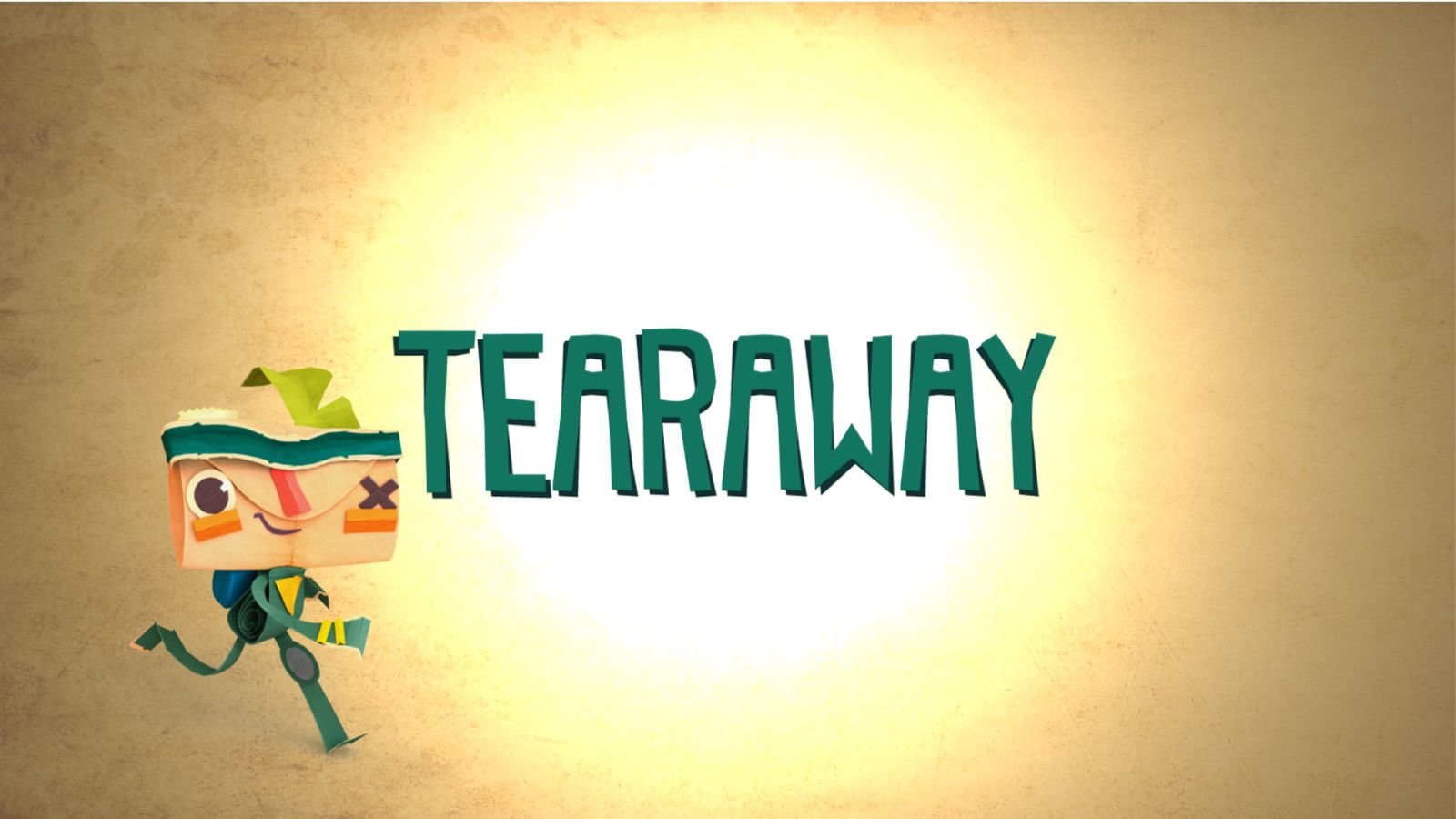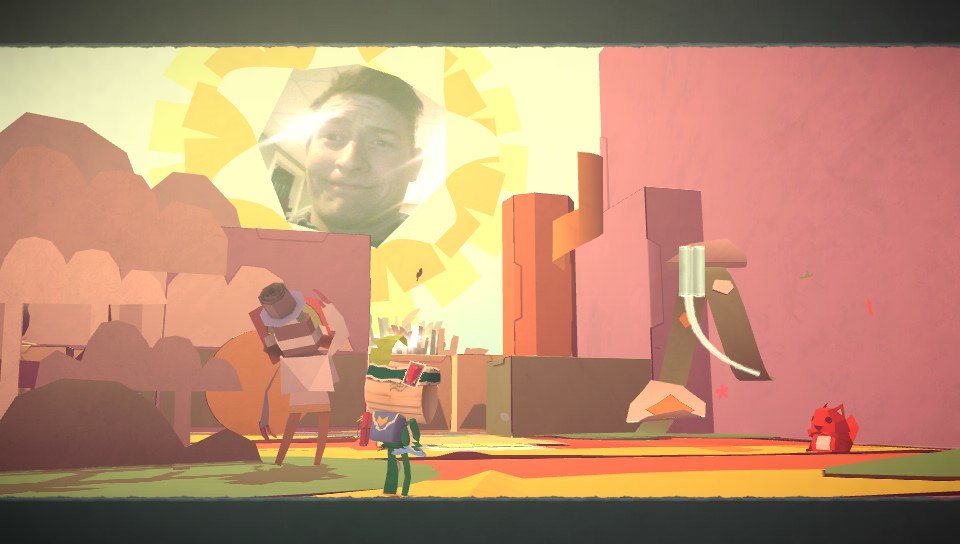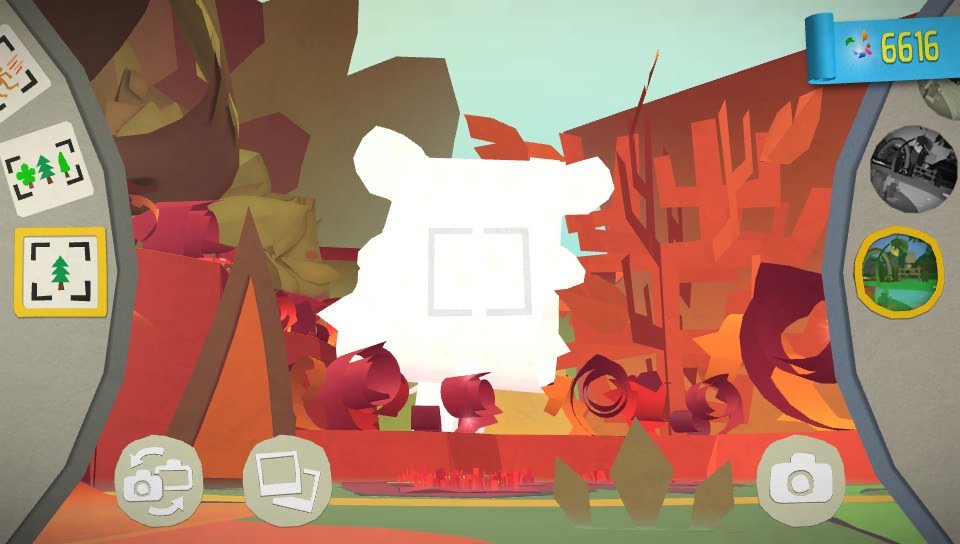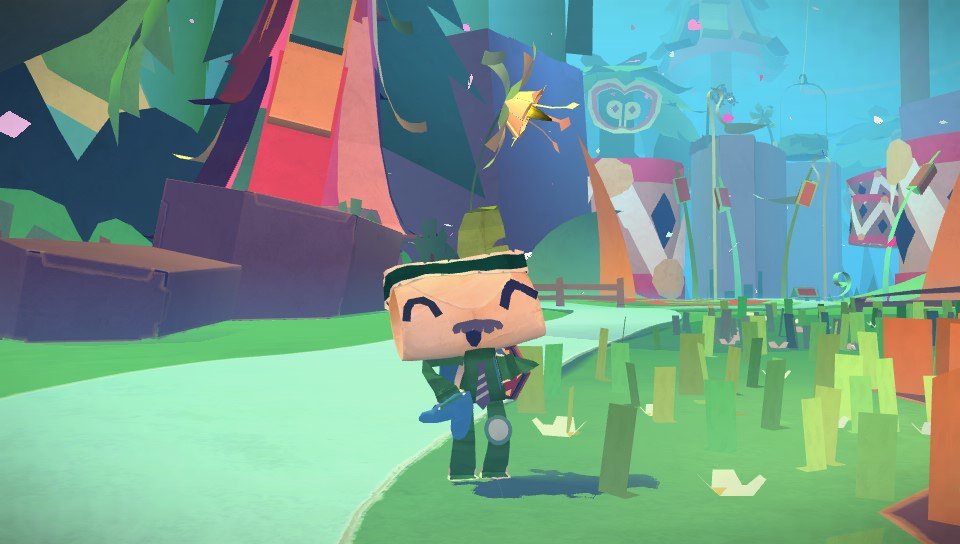Since its release in 2012, the PlayStation Vita has been littered with ports and mostly sup-par offerings from iconic franchises, and no game has been truly unique to the second PlayStation handheld. The Vita is littered with features: a touch screen, a rear touch pad, a front and rear camera, and gyroscope motion controls. Most games that have utilized these features have had often undesirable use, but Media Molecule’s new platformer, Tearaway, feels like the first game to make the Vita’s arsenal of features feel necessary, and creates an experience unlike any before.
Tearaway pits you in the role of a personified message that is tasked with delivering itself to you. Yes, you, the player, are technically a character in this game. Utilizing the Vita’s front-facing camera, your face will randomly be displayed during the game, and will require you to take center stage, as the game’s story revolves around getting your customizable paper hero (or heroine) to you, or the “You” as you’re referred to in the game. While the inclusion of my face at first was jarring, it eventually was fun to think of myself as an actual character in the game, and the oddball humor surrounding my somewhat third-wall breaking inclusion was wildly entertaining.
Combat in Tearaway is mixed with front and rear touch interfaces, as well as using the buttons. Some areas in Tearaway have floors that when you push your finger in the back touch, your finger breaks through the floor and can destroy enemies and move environmental objects. You can also interact with certain objects in the environment with the front touch screen, which can range from springs that shoot the enemies, called Scraps, off screen, and large pits that, when activated, send Scraps falling to their doom.
The majority of combat in Tearaway uses the face buttons on the Vita. You don’t really have an “attack” button, the gameplay ranges from dodging enemies, picking them up, and throwing them, to turning into a ball to knock stilt-wearing enemies to the ground to also pick them up and throw them. Tearaway does a nice job with introducing new elements to keep the game fresh, but I still found that I wanted more dynamic combat, because near the end of the game, the new additions stop, and you’ll receive an item that gives you a massive advantage over the Scraps. I had enjoyed the new enemy types introduced, and I wished that more had been revealed before the game ended.
Platforming and exploration will be the where you’ll spend the majority of your time in the game. Again, you’ll use the Vita’s touch functionality to alter the environment to help your character progress through the level. While the puzzles included in the game won’t cause too much trouble to complete, they’re fun and the ever-changing nature of interact-able objects keeps the platforming fresh.
Along with using the touch screen interfaces, much of the gameplay involves the gyroscope tilt and the cameras. Near the beginning of the game, your character is given a camera that has the ability to restore color to color-less characters, and you can use your Vita’s camera to apply custom looks to give the game your own unique spin. Some puzzles with use the gyroscope tilt to change the environment, and it mostly works well.
Visually, Tearaway is stunning. What sets it apart from other titles is its unique art style that gives its world unending charm and life. The entire game looks like it was made out of paper-craft, and it looks incredible on the Vita’s OLED screen. Rich, bright colors litter the world, and the nonrestrictive narrative allows the game to create levels and designs that takes the player to places most other games couldn’t. The exclusion of a deep narrative has taken the restrictive chains away from Media Molecule, and they seized the opportunity by going completely nuts in level design – and that’s a good thing.
While the game looks fantastic on Vita, toward the end of the game the frame-rate drops during scenes filled with more animations and enemies than the game seemingly can handle. These moments are few and far between, but their inclusion harms the flow of the story, but since most of these performance issues are near the end game, it doesn’t harm the experience enough to spoil the other excellent moments in the game.
Tearaway isn’t a terribly long title. While just playing the main story and occasionally looking for collectibles, I took about 7 hours to complete the main story. There are a large amount of collectibles to find, however, so those looking to extend their time with the game will find plenty of options post-story, as all the chapters can be accessed individually to 100% sections you may have missed something in.
Instead of tacking on the various Vita features for unnecessary integration, Tearaway was built completely around them, and Media Molecule shows other developers that with enough ingenuity and clever thinking, the Vita can help immerse the player like never before. Tearaway is one of, if not the best Vita title to date. Media Molecule has not only crafted a wonderful game, but one that proves the Vita can provide experiences like none other if executed properly.
This review is based on a review copy of the PlayStation Vita game Tearaway by Media Molecule, distributed by Sony Computer Entertainment Europe.
- Impeccable Charm
- Masterful Use of Vita
- Small Playability Issues





